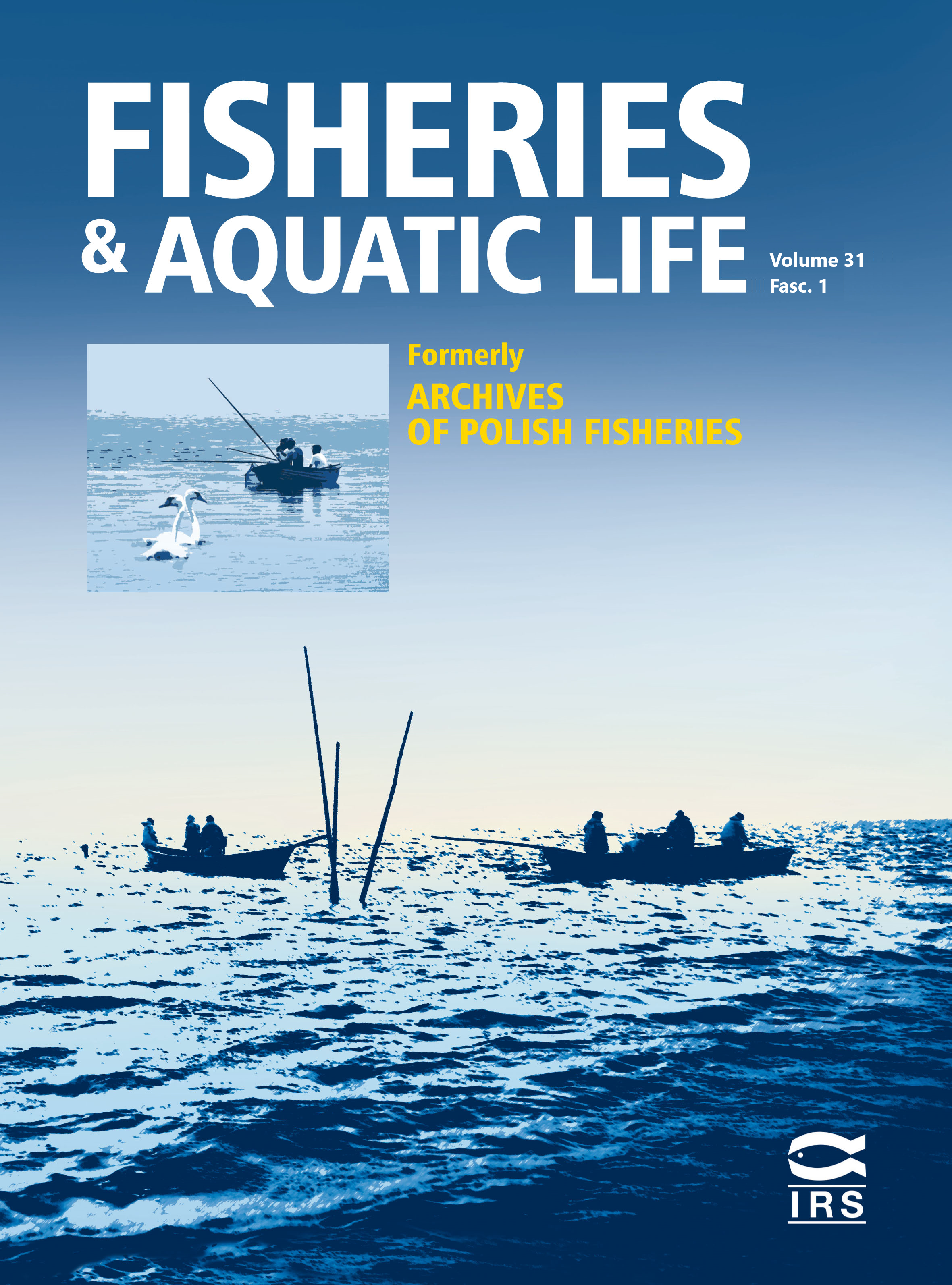Comparison of fatty acid composition of the eggs of wild and farmed Coregonus maraena and the influence of feed
Abstract
The fatty acid (FA) compositions of eggs from wild whitefish and captive broodstocks were investigated to estimate the FA requirements of Coregonus maraena. The aim of this study was to increase basic knowledge on the nutritional needs of broodstock. Whitefish eggs from two natural spawning grounds were compared with that of captive broodstocks that were fed three commercially available feeds used in fish farms in Mecklenburg-Vorpommern, Germany. Wild fish eggs differed significantly in crude protein content and FA profiles from the eggs of experimentally farmed fish groups. The percentage of monounsaturated FAs (MUFA) were significantly lower in the wild fish eggs. The most common MUFA was oleic acid in all groups, although in the wild fish eggs the value of it was almost half of that in farmed fish eggs. Wild fish eggs had significantly higher values of total polyunsaturated FAs (PUFA), especially of n-3 PUFA, which was nearly double that of the eggs of the farmed fish groups. Additionally, it was shown that egg FA composition even differed between the wild fish stocks that were from the same area, whereas there were no differences in egg proximate composition or FA composition among the three feeding groups even though the compositions of the feeds fed to these fish differed significantly. The present study suggested that the proportions of essential FAs supplied in the dry feeds fed to the captive broodstocks were inappropriate for this species, and feeds must be adapted further to meet the nutritional requirements of this species to improve the quality of farmed whitefish eggs.

